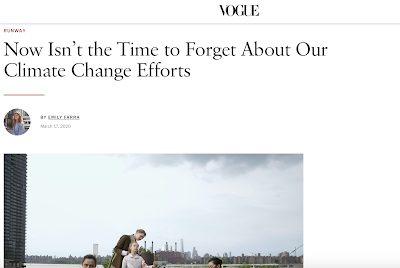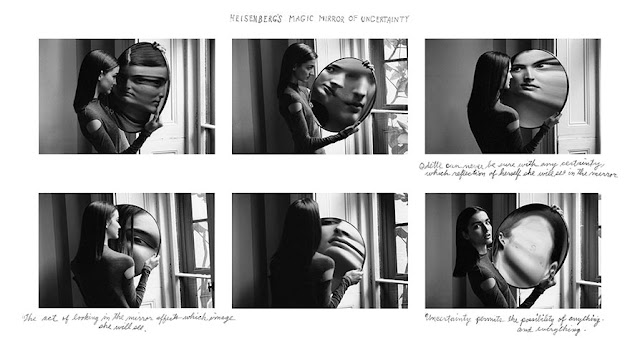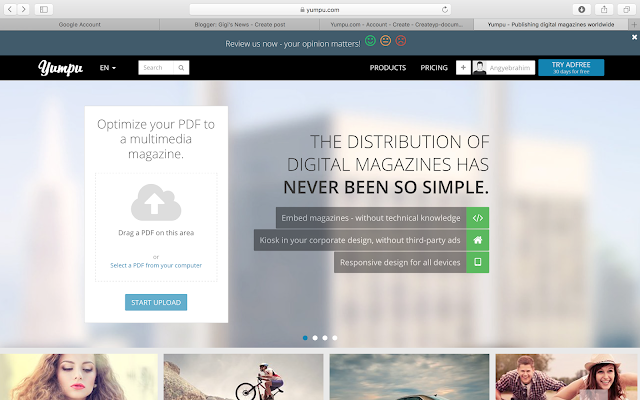Style of writing for intended audience
As my article will reflect the writing style seen in Vogue magazine, I have looked into the writing style presented by articles discussing sustainability within Vogue.
Based on my research, I have identified a common characteristic of imperative language within Vogue. According to König (2006) an imperative use of language gives significants to the subject and creates a sense of urgency. In the article "Could COVID-19 Usher in a New Era of Responsibility in Fashion? An Urgent Opportunity for Sustainability and Ethics", Barboni- Hallik (2020) uses the words "brands must..". This is an example of a strong and firm phrase that implies an order. Other examples are "new era of community and personal responsibility is upon us" and "it’s time for a new social and environmental contract". She is reinforcing the need for more sustainable methods throughout the article which is suggested to be her opinion and is trying to transmit this view amongst her readers. In fact, König (2006) states that Vogue often uses a specific tone of authority which imparts wisdom. This is also seen in a second article by Vogue entitled "Now Isn’t the Time to Forget About Our Climate Change Efforts". Similarly, Farra (2020) is being authoritative and telling the readers what they have to do, "What we need to reverse climate change is a swell of united, all-in-this-together effort from each and every one of us" (Farra, 2020).
Both articles use less formal and academic language compared to other news articles. The authors use words such as "us", addressing themselves as part of the audience and as one whole community. Abbreviations are used as well for example, "they're"and "it's". This indicates a language found in everyday conversations. König (2006) notes that fashion writing is more similar to a feature style of writing than news style of writing. Features enable the writer to be less formal and objective and to express their thoughts, which is shown within the work of Barboni- Hallik and Farra. Moreover, a feature may explore the reasons behind a topic. In order to write a feature, you should consider the questions of a subject and try to answer them (The Guardian, 2013). Both Hallik (2020) and Farra (2020) pose questions with followed answer within their writing. These rhetoric questions serve to not leave the audience with doubts or unclear points and to engage the readers, "it is a question whose form baits and whose substance hooks" (Black, 1992, p.2). Overall, the style of writing presented by vogue is elaborate in structure but simple in words (using everyday language), moreover the work of König (2006) shows that the use of technical language within vogue writing has decreased from 1980 to 2001.
BLACK, E. (1992) Rhetorical Questions: Studies of Public Discourse. Chicago: The University of Chicago Press.
Sources:
BLACK, E. (1992) Rhetorical Questions: Studies of Public Discourse. Chicago: The University of Chicago Press.
THE GUARDIAN (2013) Tips for writing a features article. The Guardian. [Online] 27th Mar. Available from: https://www.theguardian.com/global-development-professionals-network/2013/mar/27/tips-for-writing-a-features-article [Accessed 22/08/20].
KÖNIG, A. (2006) Glossy Words: An Analysis of Fashion Writing in British
Vogue. Fashion Theory, 10 (1/2), pp. 205-224.
BARBONI - HALLIK, V. (2020) Could COVID-19 Usher in a New Era of Responsibility in Fashion? An Urgent Opportunity for Sustainability and Ethics. Vogue. [Online] 20th April. Available from: https://www.vogue.com/article/covid19-sustainability-ethics-another-tomorrow [Accessed 22/08/20].
BARBONI - HALLIK, V. (2020) Could COVID-19 Usher in a New Era of Responsibility in Fashion? An Urgent Opportunity for Sustainability and Ethics. Vogue. [Online] 20th April. Available from: https://www.vogue.com/article/covid19-sustainability-ethics-another-tomorrow [Accessed 22/08/20].
FARRA, E. (2020) Now Isn’t the Time to Forget About Our Climate Change Efforts. Vogue. [Online] 17th March. Available from: https://www.vogue.com/article/coronavirus-response-why-we-cant-forget-climate-change-efforts [Accessed 22/08/20].





Comments
Post a Comment